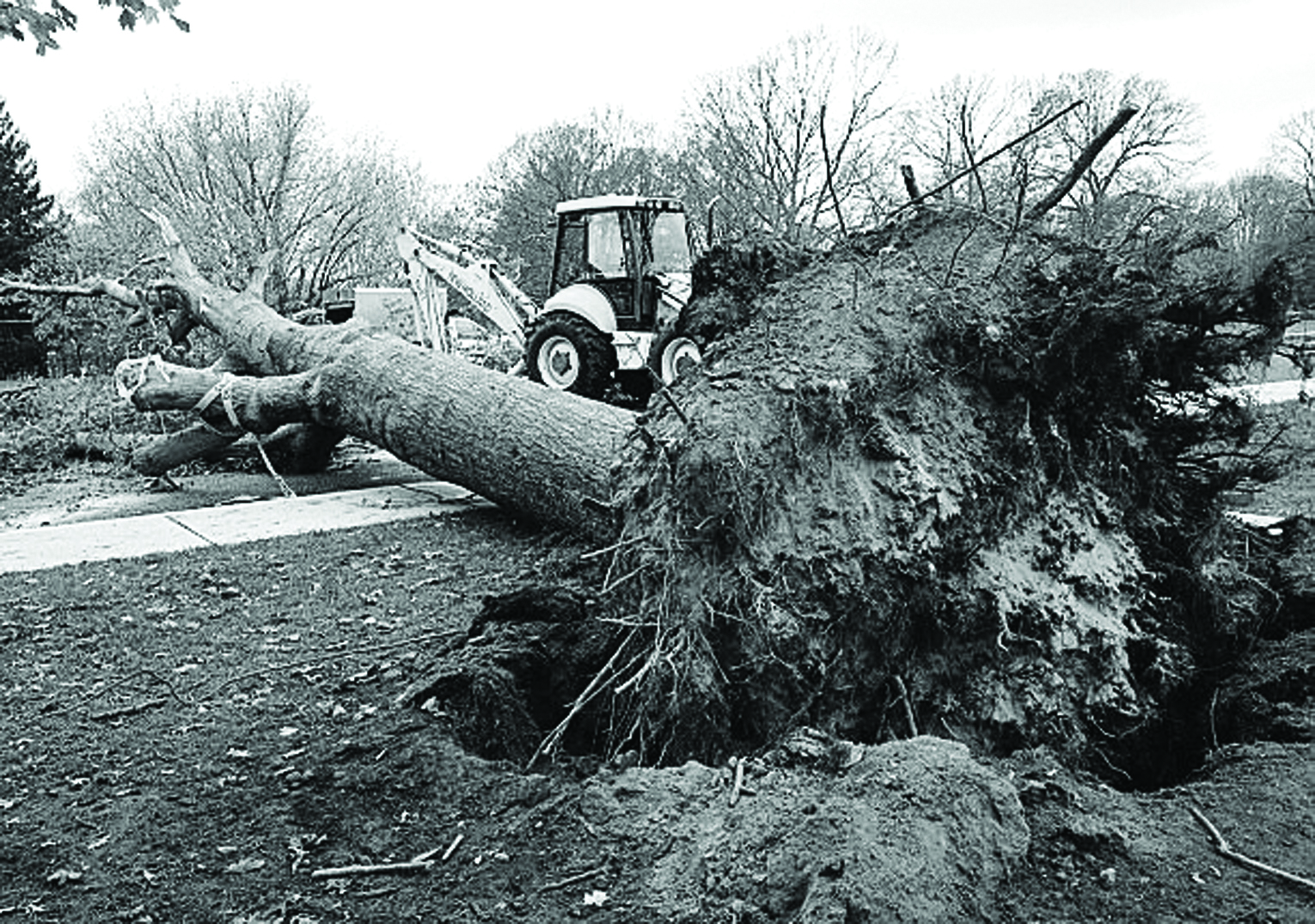Last week, the entire East Coast was hit with super storm Sandy, who left much destruction in her wake. As Connecticut College students watched neighborhoods in New York City burning, or the entire Jersey Shore get swept away, most of us sat happily in warm, lit rooms. Our daily life, for the most part, was not interrupted. The college was extremely lucky in weathering the storm, suffering the loss of a few huge trees and power outages in a few on-campus houses. Vice President of Administration Ulysses Hammond said, “We were very fortunate to have limited level of disruption at the college.”
Nevertheless, the Emergency Response Team, chaired by Hammond, began monitoring the storm as early as one week before it hit. The Emergency Response Team includes administrative staff from the Office of College Relations, Residential Education and Living, Office of Student Life, Campus Safety, Dining Services, Information Services/Phone and Technical Systems, the Powerhouse, the Environmental Health and Safety Officer and Physical Plant. The Team met in person twice during the storm and was in constant contact via email and conference calls.
By the Wednesday before the storm hit, the Emergency Response Team began implementing an emergency hurricane plan that the college already had in place for this type of situation.
“The hurricane plans calls for us to start battening down the hatches,” Hammond said.
This plan required moving all boats off the water, trimming loose limbs on trees, advancing Dining Services food deliveries, clearing storm drains to combat flooding, topping off fuel tanks as well as inspecting all of the school’s five generators. The college purchased an additional generator for this particular storm, which Hammond said could power the entire powerhouse if needed.
Beyond the typical planning that one might deem obvious, the Emergency Response Team was occupied with many activities that students would never have even known about. For example, three cell phone charging stations were set up around campus in the event of major, prolonged power outages. Furthermore, Campus Safety officers were stationed in various places around campus for safety reasons, but also to monitor for fires that could break out during the storm. Residential Education and Living identified units for relocating students in the event of a house being evacuated.
Jon Litt ’15, a College House resident, described the damage. “I was rattled, honestly. We were sitting around with the power out, and then we heard the horrific sounds of snapping wood and then, worse, thuds. We ran to the windows and sure enough, we had two trees down. We went out to investigate and it was ridiculously windy. Trees fell but were caught by a sturdier tree, which is currently keeping our house intact. Another tree was inches away from crashing through our kitchen.”
Litt and the other residents of the house were evacuated on Tuesday morning and were offered empty rooms in the Plex by ResLife.
Perhaps most impressive of all the Team’s preparations was the staff turnout. The college has a policy that requires all “essential staff” to report for work even during storms. Hammond said that in Dining Services, for example, the amount of staff normally on site in emergencies is 45%, but for Sandy, the dining halls were operating with 95% of the staff. In addition, an estimated ten to twelve Physical Plant workers remained on campus, and extra Campus Safety officers were called in. Hammond reported that many of these staff members stayed overnight.
“Campus Safety has been very helpful. They came over immediately after the trees fell and checked it out, made sure it was safe at the house. Stewart Smith [Director of Campus Safety] came by later in the night to check in on us,” Litt said.
“Our staff, they’re just heroic. They really are,” Hammond said. “[Those who report for duty during emergencies] are what we call essential staff and so that is what all essential staff sign up for, just like police officers or firemen.”
Hammond said that the most instrumental person coordinating efforts on campus was Dean of Student Life, Jocelyn Briddell. “It was Dean Briddell quite frankly who led the effort to make sure that students had activities throughout the storm and were constantly being advised by College Relations about the status of the storm. She was like a general, really, making sure that students needs were all being addressed and also thinking ahead in terms of contingencies,” Hammond said.
Dean Briddell and the Office of Student Life worked to keep students safe and occupied, offering events all around campus so nobody would have to walk too far in the storm. “[We] worked diligently to ensure that student safety was paramount before, during, and after the storm as well as worked to provide some activities including Hurricane Bingo during this time. I hear it was a blast!” Briddell said.
Meanwhile, concerned students and parents were kept up to date on the storm and its impact through web bulletins, emails, Twitter and Facebook. The college’s storm update web page saw more than 7,000 hits during the storm. The college’s Director of Public Relations Deb MacDonnell was responsible for coordinating all of this information.
“We have been thrilled to see more and more students using @ConnCollegeLive as well as our other social media channels. We appreciate the real-time feedback from students and the opportunity to communicate with you as a group and individually. We know it’s important for you to get timely answers to your questions, particularly in a stressful situation with lots of unknowns,” MacDonnell said.
Even for the Emergency Response Team, the impact of the storm was unknown. Multiple contingency plans were in place. For example, in the event of a prolonged power outage, Hammond said the school would have been evacuated. Students with cars would have been allowed to drive home, as long as the conditions allowed. All other students would be moved to a safer location.
“Given the limited power outages on campus, we did not have to make that determination. But evacuation is always part of the equation. One of the safest places to be during an emergency quite frankly on this campus is on campus because of the structure of our buildings and our location.” Hammond said.










